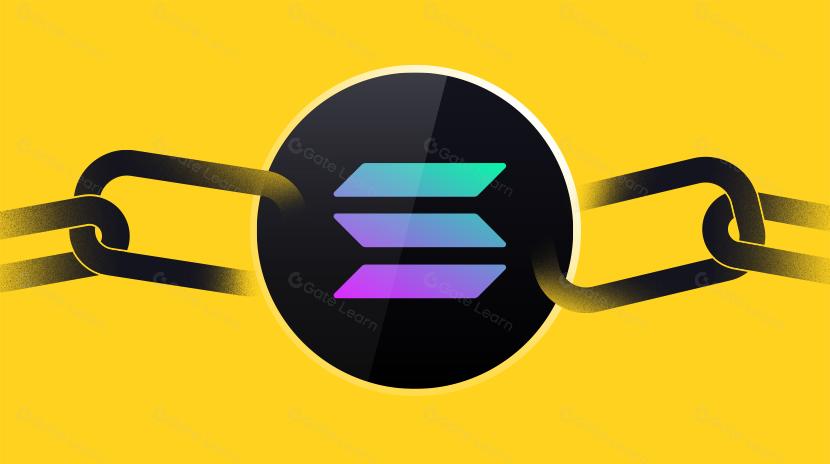NEST Protocol Quote Mining: The Next-Generation DeFi Oracle Network
Overview of NEST Protocol
NEST Protocol is a decentralized trading infrastructure designed based on the concepts of martingale networks and trading, eliminating market makers and liquidity providers. It is a decentralized oracle network protocol, applicable in decentralized contract exchanges, financial derivatives supermarkets, on-chain and off-chain risk hedging, Metaverse and GameFi economic frameworks, lotteries, prop synthesis, and more.
NEST also offers free development tools for developers and investment tools like NEST Fi for general users. Before diving into NEST, let’s understand Protocol and Oracle.
What is a Protocol?
A protocol, in simpler terms, is a set of rules that computers and telecommunications systems follow to communicate with each other. It ensures that when two devices exchange data, they understand each other and respond correctly.
Protocols are public and transparent, meaning anyone can use them and enable direct communication without intermediaries. They are organized in layers, each serving a specific purpose. For example, HTTP and HTTPS, which we see in web addresses, are part of the TCP/IP protocol application layer. These protocols are the foundation for all internet services like Google, Facebook, and Twitter.
Protocols play a similar role in the world of cryptocurrencies by allowing secure and trustless transactions without intermediaries. NEST Protocol is one such decentralized Oracle network protocol that facilitates this.

(Source:Image source: ithelp - DAY 23 [Web] Internet Protocol - TCP/IP)
What is the NEST Protocol?
NEST Protocol is a DeFi protocol built on the Ethereum blockchain, designed to provide accurate and reliable price data for decentralized finance (DeFi). It includes three main modules: NEST Oracle, NEST Asset, and NESTcraft, with NEST Oracle and NESTcraft forming the protocol’s core.
Why are Oracles Important? Applications and Advantages
Oracles link the blockchain with real-world data, allowing smart contracts to interact with external data.
This is essential as blockchains cannot directly access off-chain data. Oracles ensure that blockchain applications can operate with real-world information. Initially, oracles were not a major focus, but with the rapid growth of DeFi and NFTFi, they have become increasingly important. They are used in lending, insurance, automation, stablecoins, prediction markets, gambling, IoT, and supply chain management.
Oracles are advantageous due to their decentralization, high compatibility, upgradability, and strong generality. They enhance smart contract flexibility and promote integration with traditional systems. However, they also face challenges that need to be addressed.
Challenges for Decentralized Oracles
Reliable data sources are crucial for DeFi and dApps. Current DeFi industry practices involve using “trusted” nodes to upload asset prices from centralized exchanges, but this method has verification issues. NEST proposes a distributed oracle solution with five key points:
- Accuracy: Prices should reflect market rates accurately.
- Sensitivity: Prices should respond quickly to market trends.
- Attack Resistance: High cost for attackers to distort prices.
- Direct Verification: Third-party verifiers without centralized review.
- Distributed Quoting: Open for anyone to join or leave anytime, anywhere.
Achieving all five points is challenging, so NEST prioritizes distributed quoting over sensitivity.
How Does NEST Protocol Work?
NEST is a decentralized price oracle that determines prices through a system where miners provide bilateral quotes. If verifiers notice a difference between the quoted price and the market price, they can exploit this difference to make a profit, thereby updating the price on the blockchain. Other decentralized oracles, like Chainlink, use a network of nodes to feed price data into on-chain contracts. Additionally, cross-chain oracles like PlugChain and decentralized oracles such as ADAMoracle support price feeding from wide-area nodes.
NEST Protocol operates based on the Martingale concept, consisting of three main modules: NEST Oracle, NEST Asset, and NESTcraft. The core components driving the protocol are NEST Oracle and NESTcraft.
- NEST Oracle: This module provides decentralized price information on the blockchain. It uses a quote mining mechanism that rewards both the quoters and verifiers.
- NEST Asset: NEST tokens are created and destroyed by NEST smart contracts, rewarding participants in the Oracle module. These tokens are used as currency units for trading within the NEST system.
- NESTcraft: This is the NEST virtual machine (PVM), similar to Ethereum’s EVM. It converts various on-chain random data into a comprehensive library of Martingale functions through ILM (Infinite Liquidity Maker). NESTcraft offers multiple customizable trading options, crucial for the scalability of the NEST protocol.
NEST Oracle Quoting Mechanism
Main Participants in the NEST Protocol: Price Setters & Price Callers.
With the NEST protocol, activating a quote channel is easy with some basic setups: quote pair, quote size, commission fee, and collateral tokens. One channel can support multiple quote pairs.
- Price Setters: These include quoting miners (marked as O) and verifiers (marked as A). Anyone can be O or A. O provides quotes to earn NEST token rewards (ERC-20), and A verifies prices. If the price deviates from the market price, A can trade at this price to earn a profit but must also give a new quote. A does not need to pay commissions or participate in mining.
- Price Callers: Typically, other DeFi protocols or institutions (marked as C). They pay fees to use the NEST protocol for price quotes.
Quote Mining & Price Verification
Suppose a miner O wants to quote: 1 ETH = 100 USDT. He transfers ETH and USDT into the quoting contract, sets the size to xETH and 100xUSDT, and pays a commission of λxETH. He then participates in mining based on the set size and commission to earn NEST token rewards.
After O submits the assets and price to the quoting contract, verifier A, seeing an arbitrage opportunity, can trade ETH or USDT according to O’s quote. This ensures that the market maker’s price is either a fair market price or a value that O considers equivalent for the two assets. Since O believes 1 ETH equals 100 USDT, it doesn’t matter which asset the verifier trades.
Price Verification Period
When a verifier trades, this marks the price verification period, labeled as T0. This period determines the time and sensitivity of the quoter’s risk exposure. After the verification period ends, the quoter can withdraw assets anytime. Unfilled quotes become effective quotes, including price and size. If only part of the quote is filled, the remaining part still counts as an effective quote. Setting the verification period to 5-10 minutes balances the price delay relative to the market price, acceptable for most DeFi.
Price Chain & Block Price
After a verifier confirms a quoter’s price, they must immediately propose a new price. If someone else trades at this new price, they also need to propose a new price, forming a price chain. These prices are recorded on the blockchain, creating block prices or NEST-Price. The previous block price is used if there are no effective quotes for a block.
Price Sequence & Volatility
Each Ethereum network block corresponds to a NEST. These price sequences help DeFi systems calculate average prices and volatility. Mechanisms like price chaining and increasing quote size prevent attackers from disrupting the price system, making it costly for attackers. This enhances the security of the price verification system.
NESTcraft Probability Virtual Machine (PVM)
NEST Protocol is a Web3 infrastructure based on PVM, enabling the generation and programming of random assets. Using PVM, developers can easily and securely create on-chain assets.
NESTcraft combines martingale functions similar to Ethereum’s virtual machine, expanding NEST’s application scope and transforming it into a chain-based infrastructure. This allows anyone to create more applications based on NEST.
The underlying logic of NEST’s PVM is the same as EVM, so all EVM developments can be implemented on PVM. EVM programs are combinations of basic codes callable by paying gas fees. PVM products’ revenues are linear combinations of basic revenue functions, obtainable by paying a certain cost (i.e., the discounted revenue value).

Source: NEST Protocol whitepaper
Martingale Function Library
Implementing DeFi or dApps often requires extensive martingale information flow or basic transformation function clusters. NEST has designed these general functions into a basic function cluster called the Martingale function library, which is the essence of NESTcraft.
Using the NEST Protocol, you can create a NESTcraft front-end page and link it to EVM to develop decentralized exchanges or other applications.

Source: NEST Protocol whitepaper
NEST Protocol Attack Prevention Mechanism
When large DeFi assets rely on NEST-Price, they can become targets for attacks. Attackers might manipulate the normal quote p0 to change it to p1 or engage in malicious trades, hoping the price won’t update (since once a price is traded, it cannot be adopted or updated). The pricing mechanism fails if attackers are willing to sacrifice the spread between P1 and P0 for larger profits.
How Does NEST Prevent Attacks?
The price chain itself acts as an anti-attack mechanism. After attacking a price, the attacker must provide an alternative price and the corresponding assets. According to the anti-attack algorithm, the verifier’s quote must exceed the quoted range. The system allows up to 4 rounds of magnified verification for the quoted assets, and the collateral assets will also be expanded without the 4-round limit. Therefore, NEST prevents the system from being attacked by increasing and amplifying the attacker’s costs.
NEST Protocol Products and Ecosystem
NEST Protocol’s martingale network and NESTcraft provide technical support for developers and solve issues of asset custody (risk management) and liquidity in derivative trading, offering numerous application possibilities. These include decentralized exchanges, financial derivatives supermarkets, on-chain and off-chain risk hedging, Metaverse and GameFi economic frameworks, lotteries, prop synthesis, and other unspecified applications. Currently, NEST has over 60 ecosystem partners, as shown below:

Source: nestprotocol.org
In addition to partnership projects, NEST has also developed its own DeFi and NFT:
NEST Fi
NESTFi is a decentralized perpetual exchange based on NESTcraft. It uses smart contracts as trading counterparts. Traders’ losses are burned by the smart contract, and profits are minted by the smart contract. By eliminating reliance on limited partners or market makers, NESTFi ensures continuous liquidity for trading. This model benefits traders as project participants. As more participants join, the potential for traders to profit increases with the rising value of system tokens.
Cyber Ink
NEST’s Cyber Ink is an NFT built on NEST PVM. It combines cyber and ink characteristics, creating a new artistic style called cyber ink. We created a series of AI, human, and spatial worldview-based NFT artworks in Cyber Ink NFTs. 10,000 NFTs were issued, and each Cyber Ink can unlock NEST Fi membership and additional benefits. They can be mined on the NEST Financial Market for 99.9 NEST or purchased in NFT stores like element and PearDAO.
Learn more about the NEST Cyber Ink worldview - The Story of the Six-Person Club
NEST Team and Investors
NEST is an anonymous team, and the entire project is supervised by NEST DAO. NEST Protocol has three institutional investors: Zonff Partners, MetaWeb Ventures, and Outliers Fund. NEST DAO members are mainly composed of the following organizations:

Source: nestprotocol.org
- NEST Research Academy (NRA): This academy is composed of practitioners from academia and industrial institutions in Europe and North America. It aims to provide technical and theoretical support for new categories and maintains long-term partnerships with Vitalik, the Ethereum Foundation, Coindesk, and Consensus.
- NEST Influence Block (NIB): Primarily promotes NEST and enhances brand influence, collaborates with Vitalik and the Ethereum Foundation, establishes TikTok, Telegram, and Discord, and manages grants and ecosystem funds.
- NEST Developer Alliance (NDA): Responsible for the development of protocol core and peripheral applications, creating a developer community like hackathons.
- NEST Community (NC): Mainly responsible for community growth and promoting consensus, promoting and managing NEST holders, aiming to become the largest decentralized community in the industry.
NEST Core & Economic Mechanism
NEST is the native token of the NEST Protocol, issued on the Ethereum blockchain as an ERC-20 token. The maximum supply of NEST tokens is set at 10 billion. According to CoinMarketCap, the total supply of NEST tokens is 9,978,035,000 NEST, with a circulating supply of 2,911,743,948 NEST.

Source: NEST ProtocolNEST TOKENOMICS
No Private Sales, No Pre-Mining: All NEST tokens are mined through quote mining
Miners earn NEST tokens by paying ETH commissions and taking on some price volatility risks. Verifiers earn profits directly based on price deviations while also taking on the risk of quoting transactions. Thus, the cost/reward for verifiers is relatively clear, while for miners, the quote mining model requires an economic foundation.
All tokens in the NEST ecosystem are generated through mining, with no pre-allocation or pre-mining. All costs incurred in generating NEST are returned to NEST holders, and NEST is solely used for incentives.
Mining Pool
80% of the tokens (i.e., 8 billion tokens) will be used to reward NEST miners, releasing 24 NEST tokens per block.
Release Decay
For every 2,400,000 blocks, the block reward will decrease by 20%. This decay process will continue until the block reward decreases to 2.4 NEST, after which the reward will be fixed at 2.4 NEST per block.
Entering DAO Asset Circulation Mining
When all 10 billion tokens have been mined, a new phase will begin, with specific content to be decided by community voting.
NEST NODE Mining Pool
15% of the NEST tokens (i.e., 1.5 billion tokens) will be used to reward NEST nodes, releasing 4.5 NEST tokens per block.
DAO Incentives
5% of the total supply will be used for incentives on other blockchains, including Polygon, BNB, KCC, MAP, and future chains.
Deflation Mechanism
The supply of NEST tokens will gradually decrease. As more protocols join and use NEST, the token supply will further reduce, making it more valuable.
NEST Latest Version 4.4 Update
- Technical Improvements: Allows multiple asset quotes. A single smart contract can initiate price data streams for more than ten different assets, significantly saving on gas fees and improving upload efficiency.
- Economic Model Improvements: Eliminates quote commissions. Now, obtaining quotes from NEST is free. Meanwhile, minting output has decreased by one-sixth. Circulating supply growth is slower, at less than 3% per year. In the long run, these changes will continuously increase NEST’s value. The total amount of NEST will not exceed 3,000,000,000 (3 billion). The threshold for providing price information is low, requiring only 0.01 ETH and assets of equivalent value.
Summary: Is NEST a Good Investment?
NEST Protocol offers game-changing advantages, using smart contracts to provide unlimited trading counterparts and solving DeFi trading flow issues. While other oracles are still uploading price data on-chain, NEST Oracle can directly load price data on-chain with its innovative quoting system. NESTcraft expands the possibilities for DeFi and various Dapp applications. The token is stabilized through mining and deflation mechanisms, ensuring NEST tokens appreciate steadily. However, despite NEST Protocol’s great potential in decentralized finance, there are potential drawbacks such as:
- Price Manipulation Risk: Although NEST uses infinite amplification of attack costs to resist attacks, prices can still be manipulated in low-liquidity markets.
- Technical Risks: NEST Protocol relies on smart contracts and blockchain technology. Despite third-party smart contract audits, any technical flaws or contract errors could lead to fund losses or system crashes. A recent example is the LI.FI project within the NEST ecosystem, which had a smart contract vulnerability, causing wallets to be set for unlimited approval.
Other Potential Risks: These include economic models and market acceptance. Although NEST tokens are deflationary and promote governance and participation within the ecosystem, the total supply is relatively high compared to other protocols. Simply relying on the deflation mechanism is limited. Increasing NEST token use cases to drive demand can further enhance the token’s value.
Related Articles

In-depth Explanation of Yala: Building a Modular DeFi Yield Aggregator with $YU Stablecoin as a Medium

The Future of Cross-Chain Bridges: Full-Chain Interoperability Becomes Inevitable, Liquidity Bridges Will Decline

Solana Need L2s And Appchains?

Sui: How are users leveraging its speed, security, & scalability?

Navigating the Zero Knowledge Landscape
